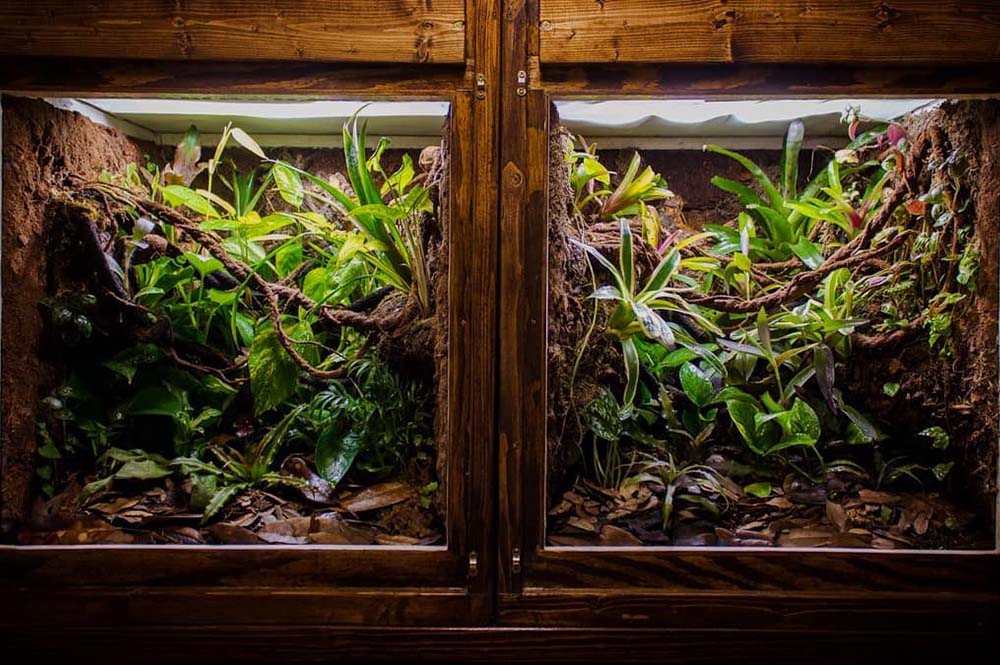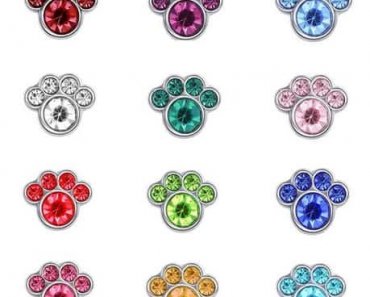
Are you thinking of getting a crested gecko as a pet, but not sure what type of enclosure to get for them? Choosing the best enclosure for your crested gecko is an important part of caring for your new pet. There are many factors to consider when selecting an enclosure such as size, safety, and temperature control. In this article, we’ll look at the different types of enclosures available and what makes each one unique so that you can make an informed decision about which type will be best for your crested gecko.
Crested Gecko’s Natural Habitat
In order to choose the best enclosure, we have to understand a crested gecko’s natural habitat in the wild so as to mimic the best environment for their well-being.
Native to New Caledonia and some off-shore islands, crested geckos thrive in lush tropical rainforest climates. Generally speaking, temperatures range from a comfortable 71 to 75 degrees Fahrenheit but can exceed 80 during hot spells. It’s quite rare for temperatures to drop below 50s in these regions; however, on occasion, it does occur.
Crested geckos typically reside in cool, shaded areas of vegetation during the day. As darkness falls, they become more active but usually stay close to the ground where temperatures are lower. In contrast with other tropical gecko species which readily inhabit human-altered environments, crested geckos usually remain within undisturbed regions.
With that in mind, let’s look at how we can best replicate their natural habitat into the right enclosure.
Factors of a good enclosure
Before anything else, to ensure the well-being of your crested gecko, it is essential to choose an appropriate enclosure. As a general rule of thumb, here are some criteria to follow:
- Provide ample space: When it comes to housing crested geckos, you don’t need an expansive space; a 10-20 gallon enclosure is sufficient. Of course, the size of your habitat should depend on how many geckos you plan on keeping in it. If there’s only one crestie living with you, then a sizable tank isn’t necessary – though larger habitats are generally better for their well-being!
- Make sure the enclosure is escape-proof: As a responsible pet owner, you want to ensure that your crested gecko does not encounter the risks of an unforgiving outside world or be in danger from other animals. It’s paramount that their enclosure is almost completely escape-proof as locating them after they have run away can be very tricky otherwise.
- Set the right temperature: Crested geckos thrive in room temperature, so typically there’s no need to supply any extra heating equipment – except maybe during colder climates and winter months. When selecting an enclosure, though, keep in mind that some may heat up faster than others.
- Provide proper ventilation: To ensure optimal health, an enclosure must provide adequate ventilation without being situated in a drafty spot. Mesh cages can be excellent for air circulation, yet when exposed to drafts they have the potential to cause respiratory issues.
- Set the right humidity: Maintaining the right amount of humidity inside your enclosure can be easily achieved with daily misting. This technique works in almost every type of enclosure.
- Encourage climbing and exploring: If you own a crested gecko, it is essential to create an environment that encourages climbing and exploration. To do this, be sure to provide vertical space in the enclosure such as branches or plants- they will love being able to climb up! When constructing your pet’s habitat, prioritize height over width as they need ample room for them to explore and express their natural behavior.
Glass Terrariums or Aquariums Enclosure
Whether you are going for an aquarium (fish tank) or glass terrariums in general, they are both very popular types of enclosures for crested geckos. They provide excellent visibility and humidity levels, and they come in a variety of sizes. However, these glass-type terrariums can be expensive and require frequent cleaning due to their porous nature. Also, glass does not retain heat very well so it is important that you use additional heating elements such as a basking light or ceramic heat emitter in order to maintain proper temperatures within the enclosure.
In addition to the above problems, look out for glass enclosures with top-opening designs (mostly referring to fish aquariums and some reptile terrariums). Top-opening design enclosures create further difficulty when caring for arboreal geckos. While this may work well in maintaining some reptilian species such as bearded dragons, it can be intimidating and dangerous for skittish crested geckos. Opening the lid of their tank could cause them to panic and try to escape – something we certainly want to avoid!
Lastly, the majority of glass reptile enclosures are designed with dimensions that better suit reptiles. But they may be bulky, and delicate and are usually more costly.
Plastic PVC enclosure
For crested gecko breeders and experienced hobbyists, plastic PVC reptile cages are an ideal enclosure type – even if the initial investment is more than many beginner owners would like to spend. Not only are they lightweight compared to all-glass enclosures, but also much more durable as well. as they are mostly opaque with only one glass panel in front, it also reduces the time you would have to spend cleaning glass and provides a sense of security that promotes relaxation for geckos and other reptiles
With pre-configured shapes and sizes specifically designed for reptiles, these cages come with additional perks such as lamp shrouds and adjustable vents that can prove invaluable over time. Thus if you’re willing to make this long-term financial commitment to your pet’s habitat care needs now, it will pay off in dividends later!
But the downside is that they do not hold humidity as well as glass terrariums so additional misting may be required to keep your crested gecko hydrated. Additionally, these types of enclosures tend to be smaller than glass terrariums which mean that you must monitor the temperature more closely in order to ensure your crested gecko has enough room to move around without overheating or becoming too cold. Another drawback of plastic cages is that they only come equipped with one glass door, making observation a bit more challenging
Screen or Mesh Reptile enclosure
Mesh or screen reptile enclosures are the perfect choice for housing your exotic pets like crested gecko and other arboreal reptiles. Moreover, these enclosures can be used to safely transport your pet to their vet appointments as well as temporarily house them during vivarium deep cleaning sessions. Furthermore, when not in use they are easily collapsible so that you can simply store them away at the back of a cupboard!
The most advantageous element of a screen crested gecko cage is its ability to provide robust ventilation. This helps keep the environment from becoming too warm, and more importantly inhibits mold growth that could impede your pet’s health. Furthermore, due to their climbing capabilities, these cages can be used as great viewer platforms for you to observe your fuzzy friend in action!
In addition to these advantages, another strong reason to use screen enclosure over glass vivarium is stress. Sometimes pet reptiles, especially territorial ones, can become stressed in vivarium’s as they can see their reflections in the glass. A mesh enclosure potentially prevents these invisible problems.
Lastly, the main drawback to the screen cage is that it does not hold humidity well. This can easily be remedied by misting at least twice per day to ensure that the gecko gets the hydration it needs. Proper hydration is vital to the proper shedding of the crested gecko.
DIY, and Simple Plastic Enclosures
You can also build your own enclosure using materials such as PVC pipes, mesh wire, wood panels, etc. This option allows you to customize the size and shape of the enclosure so that it best suits your needs and budget. You can also add features such as plants or vines along with other decorations to create a natural habitat for your crested gecko.
However, DIY enclosures require more maintenance than store-bought options since they must be regularly cleaned and checked for any potential hazards or damage caused by wear and tear over time. Furthermore, DIY enclosures may not offer adequate ventilation or temperature control if they are not designed properly so it’s important that you research thoroughly before attempting this option.
Conclusion:
At the end of the day, there is no one-size-fits-all solution when it comes to choosing an enclosure for a crested gecko; each situation will require its own assessment based on cost, size requirements, available space in your home, temperature/humidity needs, etc. In order to choose the best type of enclosure for your crestie friend you need to understand their needs first before making any decisions about their housing situation! Luckily there are plenty of options out there from store-bought cages like glass terrariums and plastic/mesh/aquarium enclosures or even making one yourself with DIY supplies—so do some research ahead of time before deciding what’s right for you! With careful consideration, you can guarantee that both you and your crestie friend will have a comfortable home together!

























